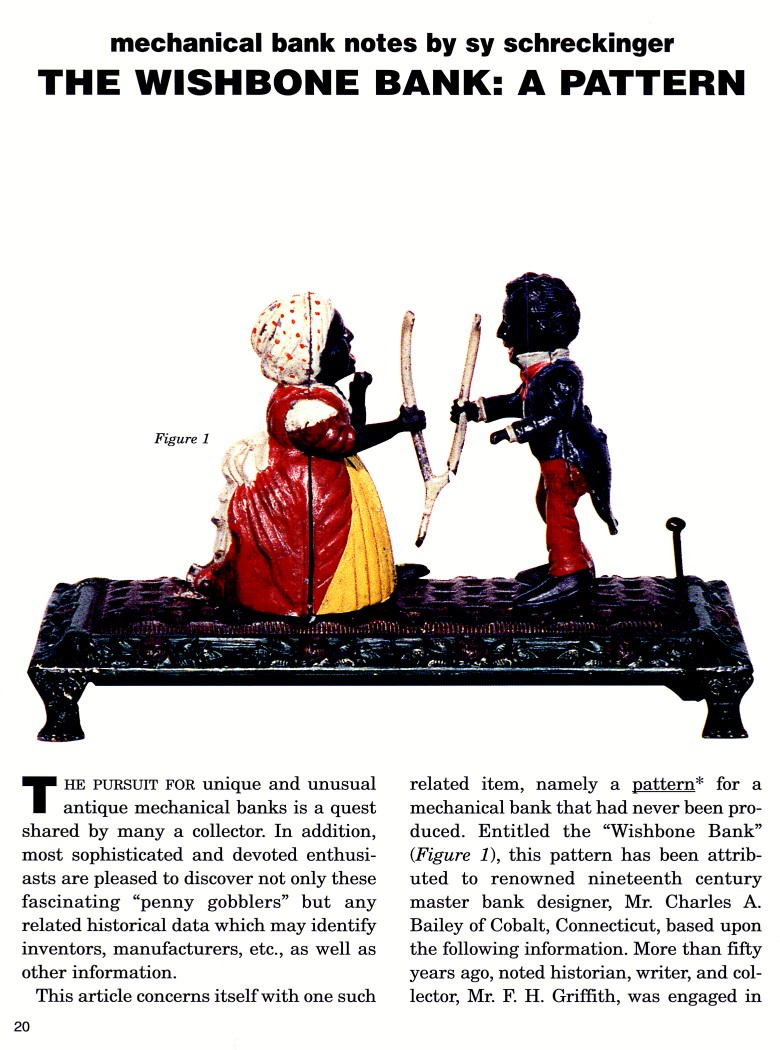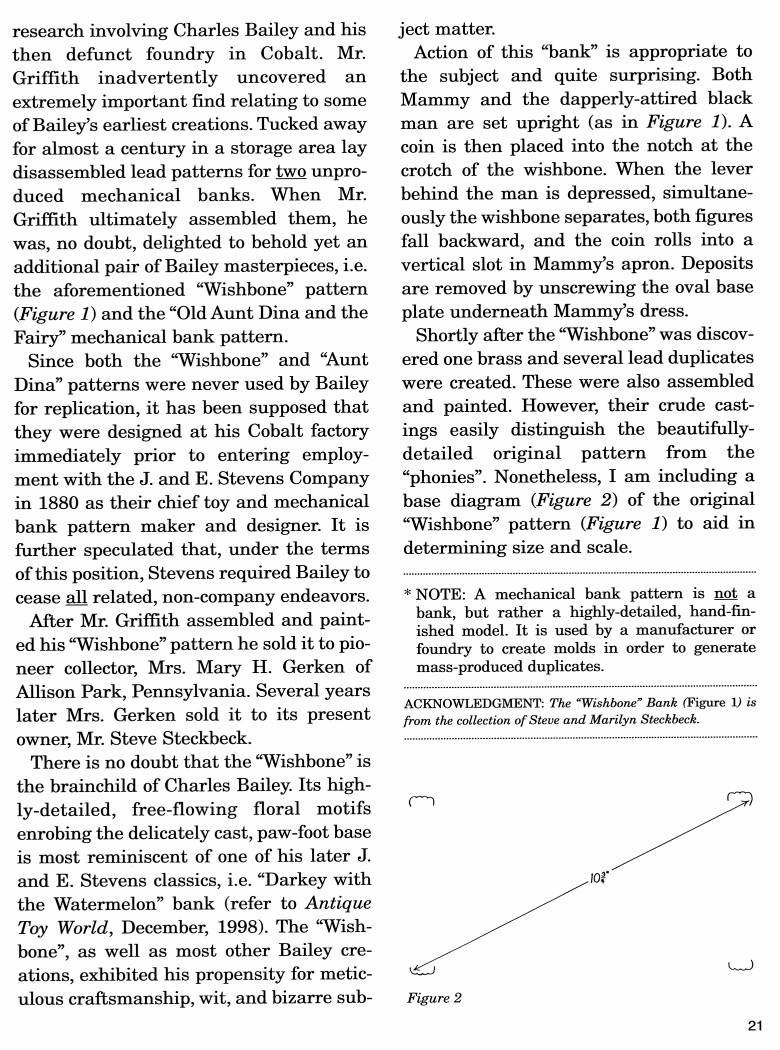|
The Wishbone Bank: A
Pattern
by Sy Schreckinger – ANTIQUE TOY WORLD Magazine – August, 1999
The pursuit for unique and unusual antique
mechanical banks is a quest shared by many a collector. In addition, most
sophisticated and devoted enthusiasts are pleased to discover not only
these fascinating "penny gobblers" but any related historical data which
may identify inventors, manufacturers, etc., as well as other information.
This article concerns itself with one such related item, namely a
pattern* for a mechanical bank that had never been produced. Entitled the
"Wishbone Bank" (Figure 1), this pattern has been attributed to renowned
nineteenth century master bank designer, Mr. Charles A. Bailey of Cobalt,
Connecticut, based upon the following information. More than fifty years
ago, noted historian, writer, and collector, Mr. F. H. Griffith, was
engaged in research involving Charles Bailey and his then defunct foundry
in Cobalt. Mr. Griffith inadvertently uncovered an extremely important
find relating to some of Bailey's earliest creations. Tucked away for
almost a century in a storage area lay disassembled lead patterns for two
unproduced mechanical banks. When Mr. Griffith ultimately assembled them,
he was, no doubt, delighted to behold yet an additional pair of Bailey
masterpieces, i.e. the aforementioned "Wishbone" pattern (Figure 1) and
the "Old Aunt Dina and the Fairy" mechanical bank pattern.
Since both the "Wishbone" and "Aunt Dina" patterns were never used by
Bailey for replication, it has been supposed that they were designed at
his Cobalt factory immediately prior to entering employment with the J.
and E. Stevens Company in 1880 as their chief toy and mechanical bank
pattern maker and designer. It is further speculated that, under the terms
of this position, Stevens required Bailey to cease all related,
non-company endeavors.
After Mr. Griffith assembled and painted his "Wishbone" pattern he
sold it to pioneer collector, Mrs. Mary H. Gerken of Allison Park,
Pennsylvania. Several years later Mrs. Gerken sold it to its present
owner, Mr. Steve Steckbeck.
There is no doubt that the "Wishbone" is the brainchild of Charles
Bailey. Its highly-detailed, free-flowing floral motifs enrobing the
delicately cast, paw-foot base is most reminiscent of one of his later J.
and E. Stevens classics, i.e. "Darkey with the Watermelon" bank (refer to
Antique Toy World, December, 1998). The "Wishbone", as well as most other
Bailey creations, exhibited his propensity for meticulous craftsmanship,
wit, and bizarre subject matter.
Action of this "bank" is appropriate to the subject and quite
surprising. Both Mammy and the dapperly-attired black man are set upright
(as in Figure 1). A coin is then placed into the notch at the crotch of
the wishbone. When the lever behind the man is depressed, simultaneously
the wishbone separates, both figures fall backward, and the coin rolls
into a vertical slot in Mammy's apron. Deposits are removed by unscrewing
the oval base plate underneath Mammy's dress.
Shortly after the "Wishbone" was discovered one brass
and several lead duplicates were created. These were also assembled and
painted. However, their crude castings easily distinguish the beautifully-detailed original pattern from the "phonies". Nonetheless, I am including
a base diagram (Figure 2) of the original "Wishbone" pattern (Figure 1) to
aid in determining size and scale.
* NOTE: A mechanical bank pattern is not a bank, but rather a
highly-detailed, hand-finished model. It is used by a manufacturer or
foundry to create molds in order to generate mass-produced duplicates.
ACKNOWLEDGMENT: The "Wishbone" Bank (Figure 1) is from the collection
of Steve and Marilyn Steckbeck.
|


